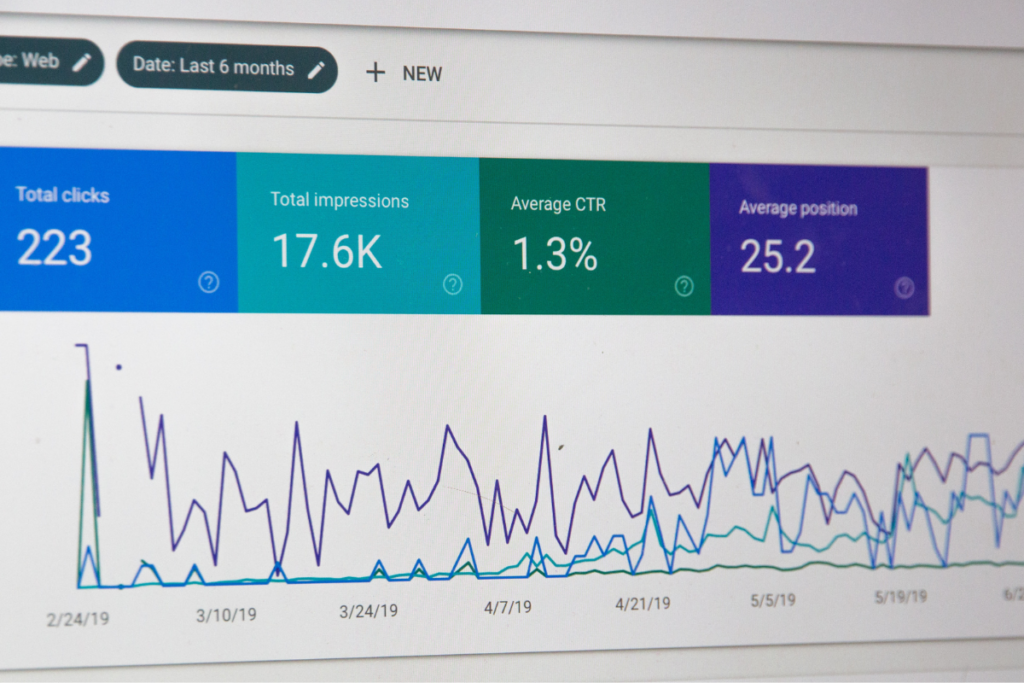Wondering, “What’s the big deal with backlinks?” or even, “What exactly is a backlink in the SEO world?”
Well, you’re not alone!
Backlinks are something akin to trophies – a coveted prize for businesses battling for online visibility. Our guide is here to demystify backlinks, bringing insights that can fundamentally shift your website’s rankings.
In addition to terminology and strategy, we’ll discuss hot topics such as white-hat vs. black-hat strategies and touch on the fascinating world of toxic backlinks.
Let’s get started!
What Are Backlinks?
In the world of SEO or search engine optimization, one term you’ll commonly encounter is ‘backlink.’
But what are backlinks?
A backlink in SEO refers to any hyperlink from one website that leads to another.
To make it more relatable, imagine backlinks as highways connecting various cities on an expansive internet map. These links direct traffic from one location on the web to another, guiding users through their digital journey.
Consequently, when a webpage links back to your site, it indicates appreciation for your website – similar to an online vote of confidence. This signal is pivotal in Google’s assessment of your page’s merit.
One interesting aspect about how backlinks work pertains to its origins.
Say you own a blog about baking recipes, and I run a website selling baking supplies. If I link your website in one of your blog posts endorsing you as my go-to recipe resource, that is an example of a backlink for your blog. And yes, blogging helps SEO.
Remember, though: All backlinks aren’t created equal – there are many types, such as Do-follow Links and No-follow Links, which we’ll touch on later.
In summary, A backlink mirrors website recommendations on the internet. Individuals like bloggers and organizations can leverage them to enhance visibility and authority online.

Why is Link Building Important?
Link Building holds paramount significance in the vast field of SEO.
This pivotal strategy primarily revolves around creating and earning backlinks for your website to amplify its domain authority and boost visibility.
Building backlinks has multiple benefits. Primarily, when another website links to you, it signals to search engines that your content is legitimate and valuable. As a result of this vote of confidence, your website gains credibility, which pushes it higher in search rankings.
This direct impact on SEO comes from how search engines perceive backlinks; they view each backlink as a vote of confidence towards your website from the referring site. Consequently, sites with high-quality backlinks are likelier to rank well in SERPs (Search Engine Results Pages).
On the other hand, link-building reinforces brand authority by positioning your brand within online conversations in your industry, extending exposure, and supplementing credibility. You’ve heard it right – through strategic link building, you directly influence how credible your website appears to users and search engines.
How Many Backlinks Do You Need?
There’s no right or wrong answer here- it relates to quality.
So let’s debunk this: There isn’t any precise magic figure for “how many” when we talk about natural backlinks necessary to boost SEO effectively—many factors scaffold this aspect.
- Age of Your Website: Fresh websites may need more effort in link-building initiatives than established ones due to the entrenched trust level of older domains.
- Niche: Certain industries are inherently deceptive or untrustworthy by default—sites operating therein would likely need more quality links.
- Target Keywords Competition: High-competition keywords demand more high-authority links than lower-competition keywords.
- Content Quality: Insightful content garners more link-worthy attention naturally.
Ultimately, the key lies in quantity and quality; getting just five authoritative backlinks can potentially outperform fifty low-quality ones—it’s all about striking that optimal balance.

Types of Backlinks
Understanding the differing types of backlinks is crucial in SEO. They are categorized based on how they are acquired and their effect on ranking.
Here, we will dissect four predominant types—do-follow links, no-follow links, User-Generated Content (UGC) Links, and Editorially Placed Links.
Do-follow Links
Do-follow links are a great boon for any website aiming to boost its SEO efforts—their name ‘do follow’ comes from search engines following the link from one page to another.
These powerful assets can massively influence your site’s authority since they pass on link equity from one website to yours. However, because of this potency, do-follow backlinks must be obtained ethically and responsibly.

No-follow Links
Introduced by Google in 2005, no-follow links came into the SEO picture to combat spammy link practices. Unlike do-follow links that allow SEO benefits to be passed along, no-follow links instruct search engines not to pass domain authority or PageRank across them.
They may seem like less effective backlinks morphology given that they don’t directly improve your page’s ranking power, but don’t undervalue them—they foster trust and credibility with audiences.
UGC Links
User-generated content (UGC) links are unique backlinks from user content, like blog comments or forum posts. Google introduced the UGC attribute in 2019 to keep pace with the evolving web ecosystem—which assists them in better understanding our ever-social online world. While these may lack the authoritative punch compared to other link types, they add versatility and contextuality to your overall link profile.
Editorially Placed Links
Editorially placed backlinks are inherently tied with high-quality content—they evolve when an editor or author finds pleasing substance and decides to link it organically within their article or post.
A top-tier citation signifies you’ve produced valuable content deemed worthy by others in your industry, potentially driving more organic traffic to your site while fostering solid relationships.
What is White Hat Link Building?
White Hat link building can be conceptualized as an ethical approach to creating backlinks for your website. The name borrows from the term ‘White Hat’ used in cybersecurity to denote legal practices and above board.
When incorporating a backlink in SEO, it’s essential to ensure they meet specific criteria set out by search engines. To offer a case in point, Google has published Webmaster Guidelines specifying an acceptable backlinking technique.
Staying true to these guidelines is at the core of White Hat SEO practices. They involve content creation and promotion, direct outreach to bloggers, influencer marketing, press releases, and guest posting — all aimed at ensuring organic growth while providing valuable content or insights to the respective audience.
Here are some features associated with white hat techniques:
- Quality Content: Quality content naturally attracts links, whether it’s a stellar blog post or an engaging infographic.
- Relevant Links: Links should apply within the page’s context where they’re featured and pertinent to your website.
- Organic Accumulation: Links aren’t bought or negotiated under shady agreements; they accumulate over time organically.
- Value-driven Approach: Providing value is paramount – whether through informative content or solid insight – and gives others a reason to link back.
White Hat link building prioritizes long-term gains over quick wins and focuses on offering genuine value.

What is Black Hat Link Building?
In the realm of SEO, black hat link building refers to practices that go against search engine policies to inflate a website’s ranking artificially. These methods manipulate the system by exploiting loopholes instead of focusing on valuable content creation or user experience enhancement.
To illustrate this further, black hat techniques may involve adding invisible text, keyword stuffing, and cloaking. A commonly used method within black hat SEO schemes is creating poor-quality backlinks. Instead of naturally attracting links from high-authority websites because of rich content, these strategies generate them through spamming or other deceptive practices.
While these tactics might provide a sporadic improvement in rankings, it’s essential to grasp their short-lived nature. They’re strictly against Google’s Guidelines and could lead to severe penalties when detected – even up to removal from search results entirely. Thus, meticulously stick with what we know as White Hat Link Building for long-lasting results.
What is PBN Link Building?
PBN (Private Blogging Network) link building breaks into the black hat SEO strategies category. This method involves creating a website network for building backlinks and passing “link juice” to one primary website for higher search engine rankings.
Website owners obtain expired domains with substantial authority and erect new sites on various topics. These websites then feature strategically placed do-follow links back to your central location, attempting to artificially raise their overall SEO power.
The trick behind PBNs lies in their perceived authenticity—they appear like ordinary websites but exist only as vehicles driving better organic search performance for target domains. However, as tempting as they sound due to potential quick gains, the neutrality disguises the potential risk involved.
Remember this: using PBNs carries significant risks, such as Google recognizing these networks’ artificial nature and subsequently penalizing your primary site heavily—a scenario many businesses can’t afford—and exactly why we recommend staying away.
Link Building Strategies
Effective link-building strategies can be the difference in seeing your SEO grow or stagnate.
Let’s delve into some of the most beneficial steps to aid you in your course.
Analyze Your Competitors
The first key strategy is to analyze your competitors. As the dog-eat-dog proverb goes, you must know what others are doing to stay on top of the game. Make use of tools like SEMRush and Ahrefs, which highlight where competitors’ backlinks originate from. This process lets you outline where exactly it would be most advantageous for you to target with your backlinking strategies.
Broken Link Building Method
Employing the broken link-building method can also yield significant dividends. Simply put, this involves finding a site with a 404 error and offering relevant content from your website as an alternative replacement URL – effectively conducting a backlink check.
Create Great Content
Creating compelling, quality content appeals to readers and encourages other websites to reference and link back—that’s how backlinks work in their rudimentary form. Aim for unique insights, exclusive research, or humorous pieces that generate conversation and sharing; building authoritative backlinks is vital.

Link Reclamation
The concept behind link reclamation represents another viable route: seeking out mentions of your organization across the web without linked attribution – and then asking these sites for reciprocal backlink credit.
Press Releases (PR)
Press releases have two purposes: announcing exciting company news and providing high-quality links from reputable sources. They’re moderately underused, so they offer great potential value as a data-driven approach towards backing up stories and increasing credibility adds oomph, too!
Skyscraper Method
Next, let’s talk about the Skyscraper method – determining what kind of content attracts top backlinks within your niche before creating something noticeably better & reaching out for links pointing at them.
Statistic Link Building
Statistic link building is yet another avenue with high-impact results potential—compiling original statistics offers stand-alone reason enough for citation by others, driving traffic while forging those golden backlinks, too!
Guest Posting
Guest posts are a tried-and-true tactic in driving traffic and forging valuable connections. Fostering mutual relationships between writers and sites, guest posts pave the way for golden opportunities in establishing high-quality external links. It’s all about creating a win-win situation where everyone benefits!
Podcasts
Moving down our list, podcasts are a great way to reach new, captivated audiences, offering ample opportunities for drawing backlinks through show notes or distributor site detail pages. It’s a scenario where everyone wins!

Directories
Also, pay attention to the potential of reputable submission directories. These platforms are fantastic places for low-hanging fruit that anyone serious about local SEO should consider.
Ultimate Guides
Ultimate guides serve dual purposes –they educate AND hook readers through sheer depth/breadth of information offering, making them robust cornerstone pieces inherently linkable tenfold.
Linkable Assets
Speaking of ‘linkable,’ what about crafting linkable assets? Think infographics/case studies/tools well-executed each becomes irresistible shares.
Dos and Don’ts of Link Building
Entering the world of link building can feel like navigating through a minefield, especially when you’re not fully aware of what practices yield the most beneficial results.
There are specific paths that provide safe passage (White Hat SEO) and others that are less savory and lead to severe penalizations (Black Hat SEO).
Here are some of the major dos and don’ts of link building:
The Dos:
- Target quality over quantity: While securing a large number of links might seem appealing, focusing on the quality of each backlink furthers your cause more effectively. For instance, receiving backlinks from top-tier sites such as CNN or BBC carries significantly more weight than dozens from lower-ranking websites.
- Diversify your strategy: A varied approach is pivotal in link building. Try incorporating different methods like guest posts, press releases, podcasts, directory submissions, or creating “best” article mentions to cast a wider net for valuable backlinks in SEO.
- Perform regular checks. Remember, monitoring is equally essential as implementation. Frequent backlinks check allows you to keep track and manage your link profile better–from quickly remedying broken links so they don’t negatively impact user experience and performance.

The Don’ts:
- Don’t use artificial techniques: Google’s advanced algorithms identify unnatural linking patterns related to Black Hat SEO, such as comment spamming or partaking in Private Blog Networks (PBN).
- Don’t ignore content quality: Content remains king! If you decide to guest post or create linkable assets, ensure that it provides substantial value and isn’t merely made to gain backlinks–a backlink blog must still prioritize reader relevance and interest.
- Avoid “reciprocal linking“: This is an old technique where two sites agree to exchange links simply for mutual benefit without adding any real value to their respective audiences.
Frequently Asked Questions
Every day, we encounter several questions related to backlinks and their integral role in search engine optimization (SEO).
In this section, we’ll answer the most frequently raised queries about toxic backlinks, how long they take to appear, and the nature of .edu backlinks.
What Are Toxic Backlinks?
As important as knowing what a website backlink is, understanding toxic backlinks becomes essential, too. These harmful or low-quality links can negatively affect your site’s SEO ranking or even lead to penalties from search engines like Google.
Usually, these links originate from:
- Spam websites
- Sites that Google does not index
- Websites with inappropriate content
- Link networks created primarily for link-building purposes
The critical aspect lies in keeping an eye on your link profile; this way, you can identify potential toxic links before they cause significant damage.

How Long Does It Take for Backlinks to Show Up?
The timeline for when newly built backlinks begin influencing SEO varies enormously. Depending on how frequently a website gets crawled by search engine bots, new backlinks could appear within hours of being acquired, but others may take weeks or even months to be acknowledged.
Several factors play into this timeframe:
- The popularity and ranking of the linking page.
- Your website’s crawl frequency – If your site is crawled often by Google’s bots, your new backlink could be discovered more quickly.
- The ‘freshness’ of the link: Freshly inserted links on high-ranked sites tend to get found sooner than older ones on less popular sites.
Patience remains key when establishing quality backlinks.
What Are edu Backlinks?
‘.edu’ refers to domain extensions used predominantly by higher education institutions (like universities), making them highly authoritative sources in Google’s eyes—these educational institutions are non-profit organizations boasting high trustworthiness levels from users and other websites alike.
.edu backlinks are coveted because they come from such reliable sources. When an established academic institution links to your content or mentions your website as a reference point, it gives you elevated credibility among search engines.
Conclusion
In the landscape of SEO, undisputedly, backlinks hold a potent role.
As we’ve gone through in this ultimate guide, understanding what a backlink in SEO is tantamount to recognizing its power for your website’s ranking. The conversation around backlinks isn’t merely why backlinks are essential but extends to their quality, types, and how they bolster SEO efforts.
One key takeaway is that not all backlinks are created equal – you’ll want authoritative backlinks from reputable websites over lesser-known platforms. Leveraging techniques such as creating linkable assets or employing the skyscraper method can help build these top backlinks effectively.
Ultimately, the world of SEO backlinking is vast and ever-changing – new responses emerge as frequently as fresh questions surface. Though it might seem complex initially, navigating it becomes more comfortable once you understand the basic tenets – balance quantity with quality and strategic planning with organic growth.
But keep this guide from where your learning ends! Continue researching ‘how do backlinks work,’ check out examples, and go deeper into the nuances of different strategies — each nugget of knowledge gained along the way will only help strengthen your SEO.




![Featured Image - Mental Health Content Writing [Best Practices and Ethical Considerations]](https://trioseo.com/wp-content/uploads/2024/05/Mental-Health-Content-Writing-Best-Practices-and-Ethical-Considerations-300x157.png)
![Featured Image - Beginner’s Guide to CBD Content Writing [Tips Included]](https://trioseo.com/wp-content/uploads/2024/05/Beginners-Guide-to-CBD-Content-Writing-Tips-Included-300x157.png)

![Featured Image - [Ultimate Guide] SEO For Tech Companies That Outranks Competitors](https://trioseo.com/wp-content/uploads/2024/04/Ultimate-Guide-SEO-For-Tech-Companies-That-Outranks-Competitors-300x157.png)

![Featured Image - B2B SaaS SEO - Ultimate Guide [Strategy Included]](https://trioseo.com/wp-content/uploads/2024/04/B2B-SaaS-SEO-Ultimate-Guide-Strategy-Included-300x157.png)

